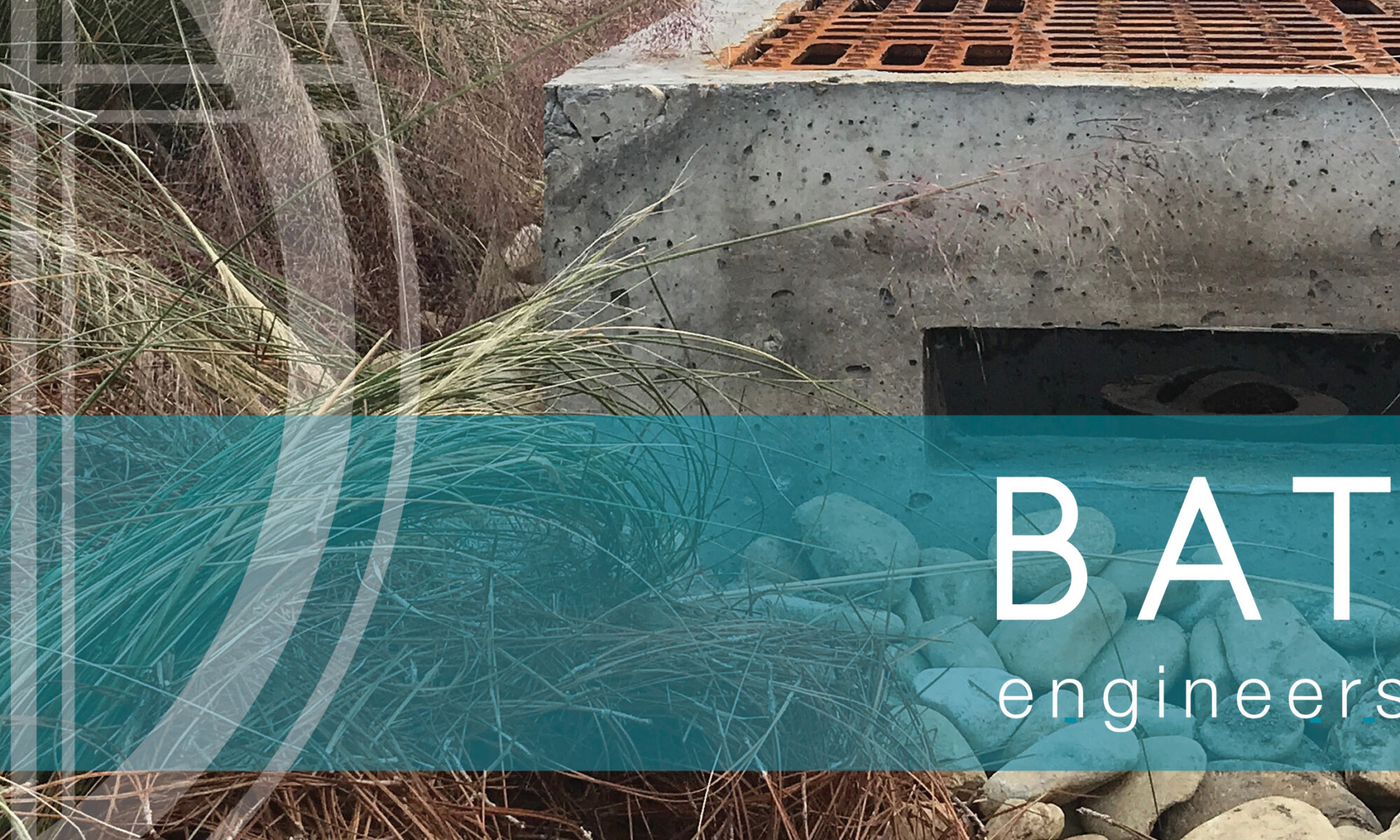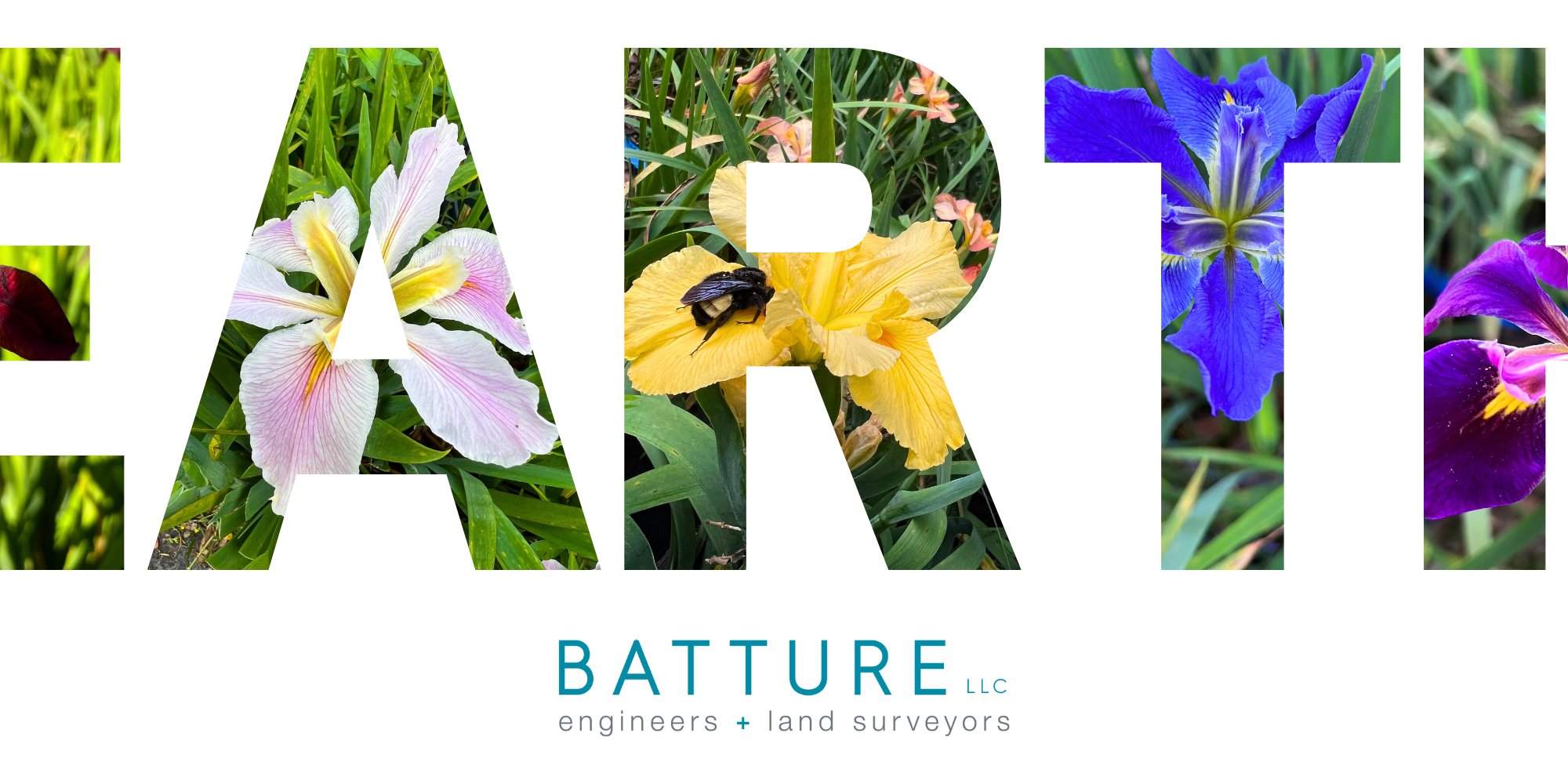We don’t have to tell you that stormwater is as much a part of New Orleans culture as snowballs and the Saints. At Batture, stormwater management is a huge priority– and it impacts our entire city. As we rapidly approach hurricane season, we know flooding and stormwater is on everyone’s minds–read on to learn about what stormwater management is and how the team at Batture supports it.
Flowing Forward: New Solutions to an Old Problem
Stormwater management, simply put, means finding ways to deal with the rainwater that falls on a site. We develop systems for water management that benefit both people and the environment–striking this balance is a core tenant of the work we do. All projects in New Orleans that are over 5,000 square feet of building, or over 1 acre in size, are required to have stormwater management. This means that the kind of projects we take on are wide-ranging and diverse, both for private businesses and the city.
In any given project, we’re required to detain the first 1.25″ of rainfall that lands within the property lines; accomplishing this relies on different types of infrastructure. Green infrastructure is nature-based practices that help manage stormwater by reducing stormwater runoff and allowing it to soak into the ground, improving water quality, and filtering out pollutants–think tree boxes, detention ponds, and living shorelines. Gray infrastructure is a traditional man-made method for managing stormwater, such as pipes, catch basins, and pumping stations.
The benefits of green infrastructure go beyond a stormwater management system– these strategies also enhance the quality of life for communities through outcomes like improved air and water quality, and beautiful green public spaces.
For example, one of our large-scale projects involves designing green infrastructure in Gentilly. The Mirabeau Water Gardens project achieves functional stormwater management through recreational and educational spaces, like walking paths and play areas. The St. Anthony Green Streets project is a community-inspired stormwater management effort incorporating public art, shade structures, and recreational and social areas.
Water We Doing?
A stormwater management project at Batture begins with our civil and landscape departments, which work together to create designs and develop plans using both green and gray infrastructure. The whole team has a hand in the design, and our owner Robert Mora ensures quality control and guides revisions. From start to finish, this is a truly collaborative effort and represents how we like to get things done. The project’s contractor uses our grading plans to manipulate the landform and/or topographic lines so that stormwater can be redirected. Managing the water as close as possible to where the raindrop falls means less pollution discharge and erosion; this is crucial to helping keep both ecosystems and human populations healthy.
The health of natural and human populations in New Orleans motivates Batture’s work in stormwater management and beyond. Introducing more gray infrastructure into the city, like asphalt and compacted gravel, only puts more pressure on our pump stations and perpetuates stormwater management issues. New Orleans needs and deserves more green infrastructure and sustainable solutions to stormwater management!
For anyone curious for more, see some frequently asked questions and answers below:
Q. What are the costs related to stormwater management?
A: We can safely say that the costs and benefits of stormwater management cancel each other out. It’s hard to put a price on good water systems and New Orleans more than any place needs effective drainage systems in place. Any sustainable infrastructure that protects water resources is a wise investment. Anyone who has seen a sewer overflow will know precisely what we’re talking about.
Q. Is green and grey infrastructure both necessary?
A: We think so! If we can leverage both types, it will allow us to create both beautiful and safe places to live
Q. Can stormwater management be cost-effective?
A: Yes, and we’d be happy to talk to anyone curious about it.

